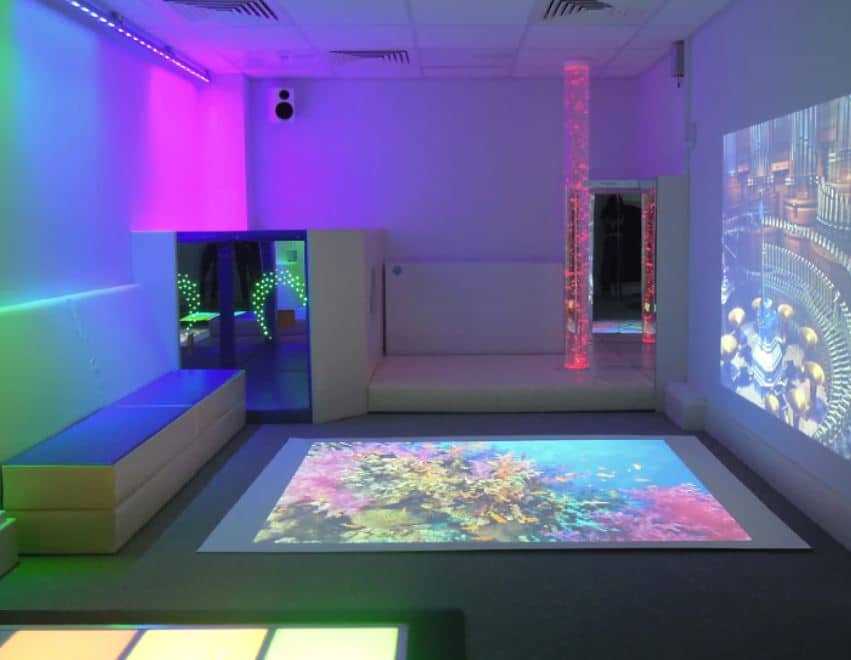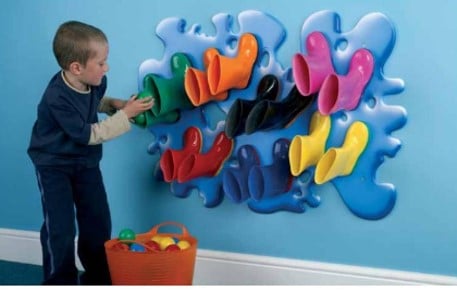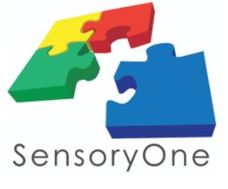
Sensory spaces can serve a variety of different purposes depending on who is visiting it and what they are hoping to get from the experience. Taking some time to consider the goals of your sensory space will help you decide the best way to set it up for maximum effectiveness. The lighting, sounds, furniture, toys and equipment you include will help guide visitors towards the mood you are trying to create. A calming sensory space will help kids in a number of different ways, and considering the needs of the children that will use it will help you create the perfect space for them.
A calming sensory room benefits many struggling children
Kids who struggle with a number of different issues can benefit from spending time in a calming sensory space. A space that reduces stimulation and stress can help kids to step away from stressors and experience a calmer attitude. Those who struggle with autism, ADHD, behavioural issues, anxiety, vision issues and other sensory processing issues will all benefit from having a dedicated calm space in which to spend time.
Creating a calming sensory space
Filling your area with things that help induce a calm and quiet atmosphere is the best way to ensure kids will benefit from this style of sensory space. The lighting, sounds, equipment and furniture you choose to include will all play a significant role in how kids interact with their surroundings and what they take away from their time there.
Ideal lighting for a calming space
When creating a calming sensory space, you want to use lighting that isn’t too harsh or bright. Children looking for a calming space will benefit from lighting with yellow tones and the ability to be dimmed. Dimmable lights allow the space to be adjusted to the needs of the child using it, so that their experience can be very personal to them. You can also use Christmas or string lights, battery powered candles, glow sticks, lava lamps and bubble tubes to set the mood for your calming sensory room.
Best equipment to encourage calmness

When creating your sensory space, the list of toys and equipment that you can include is endless. While some spaces are designed to help stimulate a child, others are intended to help calm them. The equipment that you include will play a significant role in what kind of space is created. Some ideas of items to bring into your calming sensory space include:
- Bubble tubes, walls or lamps
- An hourglass or Zen sand garden
- Fidget toys
- A tactile mat, wall or carpet
- Stress balls
- Magic sand
- Expanding Ball
- Silly putty, play-do or modelling clay
- Stuffed animals
- Weighted blanket
- Colouring books
- An interactive projector system
Calm-inducing furniture
While a sensory space created for a high-energy child might focus on using furniture that can allow movement, like trampolines and climbing ropes, a calming sensory space should include furniture that encourages relaxation. Items like beanbag chairs, floor pillows, hammocks and anything that can encourage kids to relax and unwind are perfect for a calming sensory space.
Best sounds for a calming sensory space
The background sounds in a sensory space can also play a role in the mood that’s created. A calming space should feature calm sounds to help children immerse in the experience. A sound machine can help you find the right sounds for your space. Tracks that include the sound of moving water like rain, bubbling streams, waves hitting the shore or a waterfall are typically very relaxing and calming. Soft instrumental music is also often quite calming. However, you’ll want to evaluate your particular child or children before committing to something as their interests and needs will vary.
How to create a calming environment
Even if all you have is a small corner of a room in which to create a sensory space, there are many things that you can do in order to maximize its effect on children. Combining the right lighting, sounds, toys, equipment and furniture is the best way to create a space that exudes calmness. Once you have figured out where your sensory space will be, you can start deciding what will go into it. Start by choosing a comfy seat and mood lighting, then add a few toys or activities that can help create a calm atmosphere.
A sensory space can be simple to implement
Even if you’re dealing with fairly restricted space, you can create a mobile sensory cart or bin that can go wherever the child does, with small items that are portable. A sensory space does not need to take up an entire room or be anything over the top in order to be effective. Kids will benefit from having even a small area dedicated to providing tools to help them experience calmness. The sights, sounds, lighting and equipment you choose will help them to get the most out of a calming sensory space, regardless of where and how big it is.



